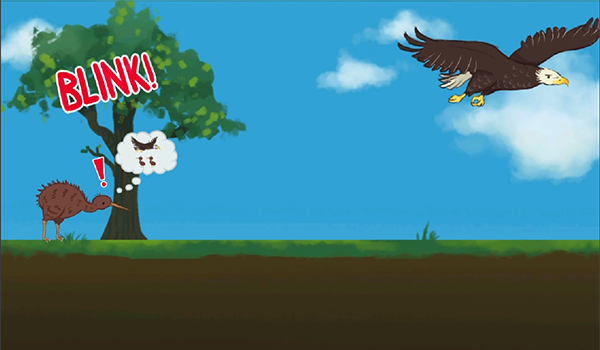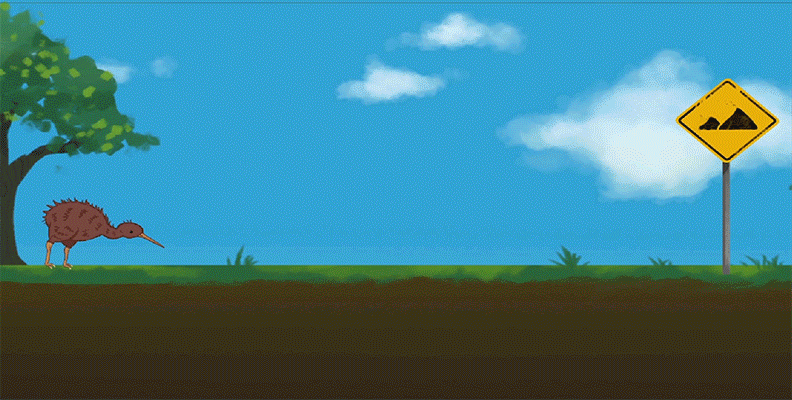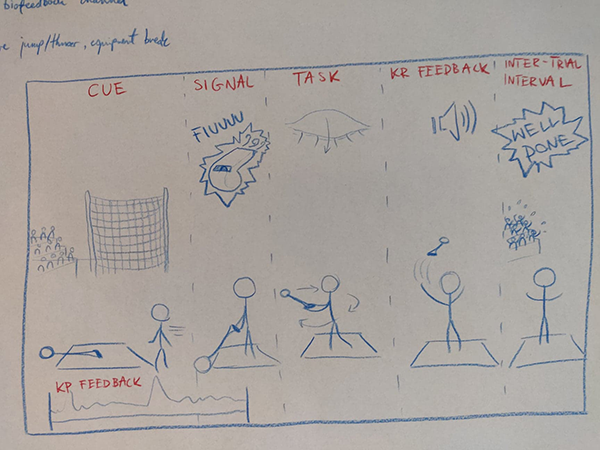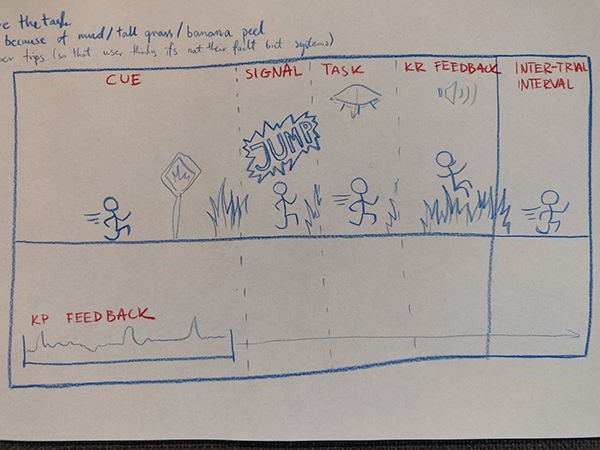Project page
Stroke rehabilitation game
Formal title:
Examining the Effects of Sham Feedback on User Frustration in a Brain-Computer Interface Game
Semester:
8th
Year:
2019
My roles:
Research, Writing, Programming, Game Design, User testing, Audiovisual Production, Data Analysis, Evaluation
Overview
In the 8th semester, I worked with Brain-Computer Interaction, or BCI, and developed a prototype game aimed at assisting in the rehabilitation process of stroke patients by making the exercises more entertaining by gamifying the process. The game is a simple runner game, which takes input to make the avatar, a kiwi bird, jump over obstacles and reach the goal. The twist on the project was using sham feedback in varying levels to affect users' motivation, frustration and perceived control. Sham feedback means having the system fake input on behalf of the user.

The game is a very simple one, but it is built on top of solid foundations backed by research. In order to inform our design, a number of different games used in research have been analysed, and we extracted a table of "interaction paradigms" on which we based the different interaction phases in our game. The game was meant to use blinking as input through a BCI-device, but since this device was unreliable for this purpose, we opted to use an eye tracker to in its place. However, the BCI device was used in testing and users were told that that was the one providing the input to the game.
Overall, this was a fun project with interesting prospects. This was a prime example of User-Centered Design, something our study puts great focus on. If you’d like to read the submitted paper click here, and for the worksheets click here.

My tasks
Research
This project realied on understanding current solutions and the state-of-the-art, which meant that we weren't just finding and skimming the papers, we had to get deep into them to be able to extract the relevant knowledge from them. By the end of the semester, we were familiar with the "big names" in the field, and the core papers became comitted to memory. Papers had to be revisited after we reached a new layer of understanding to see what other information we can gain from the studies. We created and maintained a state-of-the-art table, in which we could highlight the important information from the papers to make it easier to synthesise the knowledge.
Writing
This project was submitted to scientific journal with the hope of being published, so this meant that we had to produce a meticulous study that could be deemed worthy of publishing by reviewers. What we wrote often became rewritten to make way for a more concise and to-the-point text that could live up to high standards.
Programming
In this project, I was responsible to create various elements of the game. First, I created the parallax effect to make it seem as the avatar was running in an environment. Following this, I implemented the character and object animations and sound effects to breathe life into the kiwi bird and the game. All the illustrations were made by one of the group members, and the sound effects were acquired from royalty-free sound libraries.
Game Design
While the game itself is very simple, we went through multiple ideas and possibilities to come up with a solution that would fit the requirements of our users. The interaction phases are based upon our research. The avatar being a kiwi on its way to rescue its hatchlings is just a design decision we made out of fun rather than it being based on anything we learned from previous studies. To the left you can see the initial design of the game along with another, sport-based alternative. The concepts show how central the interaction paradigms were to the designs.
User Testing
While we worked together with experts and patients throughout the semester, we used fellow students for the user tests at the end of the semester. The results we gained are still applicable and relevant, and it was easier to secure a larger number of users from among other students than if we aimed to only use patients, but this choice was primarily due to time constraints we faced at the end of the semester. We experienced a slight hiccup in initial testing, so we performed a second round of testing following handing in to make sure that we would get usable and valid data from the tests.
Audiovisual Production
For every project, we had to make an Audiovisual Production (we just called it AV) to summarise the project. In this semester, I planned, filmed, edited and animated our AV. I used After Effects and Premiere Pro for this.
Data anaylsis and evaluation
We all took part in analysing and evaluating our findings. We used rStudio and Microsoft Excel, in this process. Our combined knowledge in this area made sure we selected the correct statistical tests.
Reflection
Overall, I would rate this as the best project I have worked on. The theoretical part of the submission was extensive and well-done, and the game suited the needs perfectly, and as a group, we were very happy with how it turned out. We ran into an issue during the first round of testing, where the sham feedback's randomization was not controlled. This meant that some users never encountered it, while there were cases where the sham rate was over 75%. We reconvened and made a correction to the code which now used an "urn model", and this made sure that we could control the sham rate exactly how we wanted.
The game is simple enough and while it may seem too simple or not entertaining for the average person, this was made for those in unfortunate and extraordinary circumstances to bring some levity to the therapy to help regain the control over their limbs. The game is capable of filling this purpose and the results warrant continued research.
I am both happy and proud to have been a part of this project, and I believe this process helped solidify some skills I would like to bring to my workplace.

